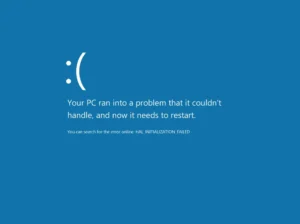Reinstalling Windows 10 might sound like a daunting task—especially if you’re worried about losing precious files like photos, documents, or that playlist you’ve spent years perfecting. The good news? You don’t have to start from scratch. Windows 10 offers simple, built-in methods to refresh your system while keeping your data safe. Whether you’re fixing a glitchy PC or just want a clean slate without the hassle, this guide has you covered.
We’ll walk you through three easy ways to reinstall Windows 10—using the Reset this PC feature, the Advanced Startup menu, or a Windows 10 ISO file—all while preserving your files. Plus, we’ve got troubleshooting tips and answers to common questions to make the process as smooth as possible. Let’s get started!
Why Reinstall Windows 10?
Reinstalling Windows can breathe new life into a sluggish or buggy system. Maybe you’re dealing with random crashes, stubborn errors, or a PC that just won’t boot properly. The beauty of Windows 10 is that it lets you reinstall the operating system without wiping out your personal files—though apps and settings might not survive the process. With a little prep, you can get back to normal fast.
3 Easy Methods to Reinstall Windows 10 Without Losing Data
Before you dive in, decide what you want to keep: just your files, or files plus apps and settings (where possible). Here’s how to do it:
Method 1: Reset This PC (The Easiest Option)
Perfect for a quick fix when your PC is still booting normally.
- Open Settings: Right-click the Start button and pick “Settings.”
- Go to Recovery: Click Update & Security, then select Recovery from the left menu.
- Start the Reset: Under “Reset this PC,” hit Get Started.
- Keep Your Files: Choose Keep my files, then follow the on-screen steps.
- Heads-Up: This wipes apps and settings, so back up any must-have programs beforehand (e.g., installer files or cloud backups).
Method 2: Advanced Startup (Great for Boot Issues)
If your PC won’t start properly, this method uses the recovery menu.
- Access Settings: Click Start > Settings.
- Find Recovery: Go to Update & Security > Recovery.
- Restart: Under “Advanced startup,” click Restart now.
- Troubleshoot: After rebooting, pick Troubleshoot > Reset this PC.
- Save Your Files: Select Keep my files and follow the prompts.
- Note: Like Method 1, this removes apps and settings—plan accordingly!
Method 3: Windows 10 ISO File (More Control)
Want a fresh install from a USB or downloaded file? This method gives you flexibility.
- Get the ISO: Download the Media Creation Tool from Microsoft’s official site and create a Windows 10 ISO file.
- Mount It: Right-click the ISO, select Mount, then double-click Setup.exe.
- Choose What to Keep: Pick from Keep personal files, apps, and settings, Keep personal files only, or Nothing—go with what suits you.
- Install: Follow the prompts to reinstall Windows.
- Pro Tip: This method lets you keep more (like apps) if you choose the right option, but you’ll need a stable internet connection or a USB drive.
Troubleshooting Common Reinstallation Hiccups
Reinstalling Windows 10 is usually straightforward, but hiccups can happen. Here’s how to handle them:
- Stuck on a Loading Screen? Patience is key—it might take a while. If it’s frozen for over an hour, restart and try again. Plug in your device to avoid power issues.
- Error Codes Like 0xC1900101? These often mean driver trouble. Update drivers beforehand or unplug extra devices (like external drives).
- Internet Drops? A shaky connection can stall the process. Use Ethernet or download the ISO for offline installation.
- Not Enough Space? You’ll need about 20GB free. Move big files to a USB or cloud storage first.
- Caught in a Loop? If it keeps restarting, boot into Safe Mode (press F8 during startup) and retry the reset.
FAQ: Your Reinstallation Questions Answered
How Long Does It Take?
Expect 20 minutes to an hour, depending on your PC’s speed and internet. Older devices or slow Wi-Fi might stretch it out—let it run without interruptions.
Will It Fail?
Freezes are rare, but they happen. If the animation’s moving, it’s likely fine. Still, back up files to an external drive or cloud (like OneDrive) just in case.
Do I Really Need to Reinstall?
Reinstalling is a big step—think of it as a last resort for major issues (e.g., constant crashes). For speed boosts, try lighter fixes like clearing junk files or updating drivers first.
Tips to Prep and Protect Your Data
- Backup Anyway: Even with “Keep my files,” save copies of key stuff to an external drive or cloud.
- List Your Apps: Jot down programs you’ll need to reinstall (e.g., Chrome, Office).
- Check Storage: Free up space before starting—20GB is the sweet spot.
Alternatives to Reinstallation
Reinstalling fixes a lot, but it’s not the only way. Check out our guides on common Windows 10 problems for simpler solutions—like tweaking startup apps or running a disk check—before going nuclear.
Wrap-Up: A Fresh Start, Files Intact
Reinstalling Windows 10 doesn’t have to mean losing everything. With options like Reset this PC, Advanced Startup, or an ISO file, you can refresh your system and keep what matters most. Hit a snag? Drop your issue in the comments—I’ll help you sort it out. Ready to give your PC a new lease on life? Let’s do this!
Source: itpro










